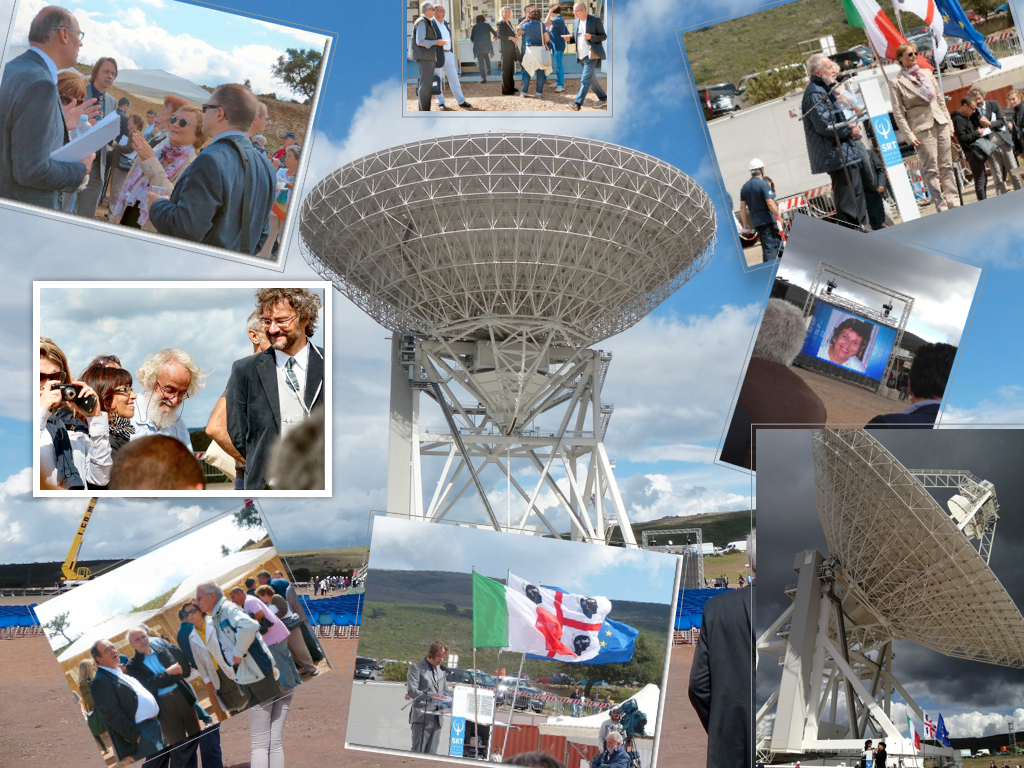Daily Image
22-10-2013Official opening of the Sardinia Radio Telescope
| Submitter: | Raffaella Morganti |
| Description: | The Sardinia Radio Telescope (SRT) officially opened on September 30th, 2013. An ASTRON/JIVE delegation attended the ceremony (while an other conspicuous group followed the event from Dwingeloo through live streaming). The director of JIVE, Prof. Huib Jan van Langevelde, gave one of the speeches emphasizing how this large (64m) telescope represents an important node in the European and Space VLBI network. It was a nice celebration with guests from the scientific and political community and with a strong involvement of the local communities, including children from the nearby schools. At the beginning of the ceremony, very dark clouds contrasted sharply with the white dish, but the rain was kept on hold until the official ribbon was cut. In the afternoon, the nice weather allowed everybody to join tours to the structure of the telescope. Among the many speeches (mostly in italian!), there was a brief moment of sadness when Prof. Giancarlo Setti posthumously thanked Dr Lucia Padrielli, the director of the Institute of Radio Astronomy in Bologna when the project started. She was a great supporter of the project, but unfortunately passed away before she could see the impressive result. The SRT is the second largest radiotelescope in the world equipped with an active surface, the capability of maintaining the ideal shape of the large 64m dish by correcting for gravity and wind deformations. With its actively controlled surface, the SRT has the potential of operating at frequencies of up to 100 GHz. The most important applications for the SRT will include VLBI and participation in the European pulsar timing arrays. In collaboration with the Italian Space Agency (ASI), the radiotelescope will also track planetary probes. In its initial phase of operations the SRT is equipped with three receivers: a coaxial L-/P-band mono-feed, a C-band receiver optimized for the observation of the Methanol 6.7 GHz line, and a 7-horn multi-feed receiver operating in the K band. Following the opening, the telescope and its instrumentation will now go through a series of Science Verification observations, including VLBI tests. Shared-risk/early science observations are expected to be offered to the community starting from mid-2015. |
| Copyright: | INAF and ASTRON |
| Tweet |  |
